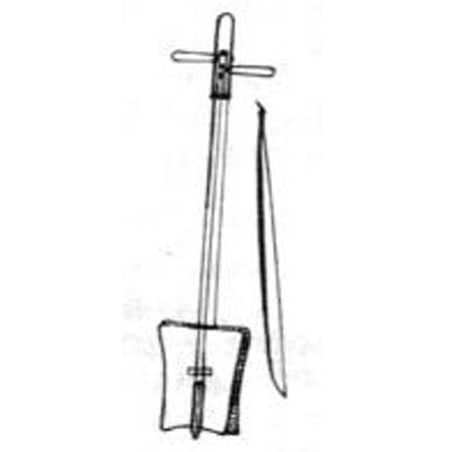Chaoer overview
 Chaoer (pinyin: cháo ěr) is also known as copying. Mongolian bow and stringed musical instruments. It is popular in Xing'an League, Zhelimu League, Zhaowuda League in the east of Inner Mongolia Autonomous Region, and Bayannaoer League and Alxa League in the west.
Chaoer (pinyin: cháo ěr) is also known as copying. Mongolian bow and stringed musical instruments. It is popular in Xing'an League, Zhelimu League, Zhaowuda League in the east of Inner Mongolia Autonomous Region, and Bayannaoer League and Alxa League in the west.Chaoer originated from the Huobusi-type Huqin (Huwuer, Huwuer) that appeared in the Song Dynasty. It appeared in the middle of the 12th century and is a drawn-stringed instrument with grassland characteristics created by the Mongolians.
At that time, there were two styles of Chaoer, one still maintained the prototype of Huer, but the lower end of the piano box had become a flat bottom, single-sided skin, more similar to Xihu; the other was a long piano rod inserted into the inverted Trapezoid case, double-sided leather, ponytail strings, ponytail bows. The various forms of Chaoer are composed of a resonance box, a headstock, a piano rod, a peg, a bridge, a string and a bow. There are many styles of resonance boxes, including an inverted trapezoid with a wide top and a sharp bottom, a rectangle with a shovel style, and a dipper or scoop shape.
When playing, the performer sits cross-legged on multiple seats or squatting and kneeling on one leg, place the piano box on the ground or back against the left leg, support the piano bar with the left hand, press the strings with the middle finger pads of the index finger, ring finger and little finger, and lift up and down to press the strings. Kneading the strings, the left side of the thumb touches the inner string, the middle finger is used for vibrato and hitting, and the index finger and middle finger are used to cover the outer string.
Famous pieces include: "Vermilion", "Gada Merlin" and "Muqilai".
- Chinese name:chaoer
- origin:Song Dynasty
- category:Mongolian bow and stringed musical instrument
- pinyin:cháo ěr
overview of other similar instruments
- sanyanxiao overview
- Daguangxian overview
- Leiqin overview
- hahao overview
- yandundagu overview
- Han Xiaozheng overview
- Fang Xiang overview
- guanzi overview
- zhuqin (Dao Qin) overview
- zhuiqin overview
- bangzi overview
- three-stringed piano overview
- Gehu overview
- xiao overview
- xiaokonghou overview
- Konghou overview
- Sheng overview
- suona overview
- hulusi overview
- gushao overview
 渝公网安备 50010702504639号
渝公网安备 50010702504639号